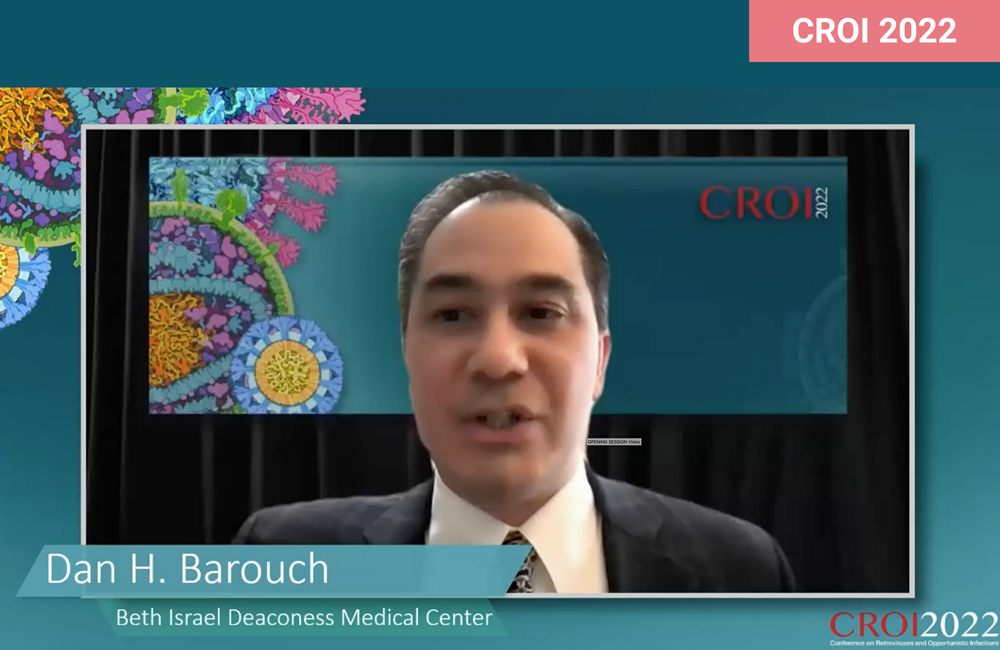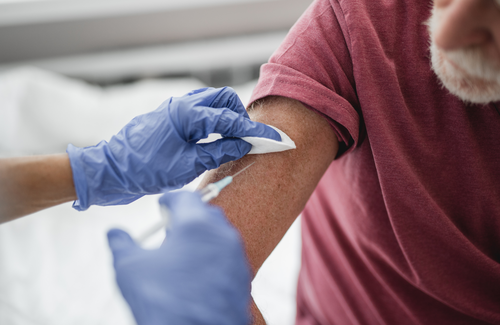
Booster doses of the Pfizer or Moderna vaccines revive antibody levels in people with HIV and response to a booster dose is not affected by CD4 count, Italian researchers reported at the Conference on Retroviruses and Opportunistic Infections (CROI 2022) this week.
But at the conference's opening session, vaccine researcher Professor Dan Barouch questioned whether a strategy of relying on repeated boosters will be either necessary or feasible. He also called for a focus on the whole of the immune response, not just antibodies, when considering which vaccines to use and when boosters should be offered.
Booster doses have been recommended based on the observation that antibody levels begin to decline within months of vaccination. As people with HIV with low CD4 counts have shown significantly lower antibody responses after vaccination, it has been assumed that booster doses are especially important for this group of people. But until now, there has been no evidence regarding changes in T-cell mediated immunity after vaccination, or the impact of booster vaccination on either antibody levels or T-cell mediated immunity in people with HIV.
In the long term, T-cell immunity to SARS-CoV-2 is the more critical form of vaccine response, as this protects against severe COVID-19. One concern is that people with low CD4 counts or people with a history of extremely low CD4 counts might have impaired T-cell responses or less durable T-cell memory responses to SARS-CoV-2, due to their immune dysfunction.
Long-term responses to Pfizer and Moderna vaccines in people with HIV
To address these questions, Dr Andrea Antinori of the National Institute for Infectious Diseases and colleagues carried out further tests on an Italian cohort of people they reported on previously at the European AIDS Conference last October. Study participants have now been followed for at least 90 days after a second dose of either the Pfizer or Moderna mRNA vaccine, enabling the researchers to compare the evolution of antibody and T-cell responses in 50 people with a CD4 count below 200, 133 people with a CD4 count between 200 and 500, and 131 people with a CD4 count above 500.
A median of 175 days after full vaccination, antibody responses had declined significantly in people with CD4 counts below 200 compared to those with CD4 counts above 500. Neutralising antibodies had become undetectable in 62% of people with CD4 counts below 200 compared to 15% of those with CD4 counts over 500. But the clinical significance of undetectable antibodies is uncertain.
The study also measured interferon-gamma responses to the SARS-CoV-2 spike protein. If interferon-gamma responses to a pathogen are absent, it means the T-cell arm of the immune response is mounting a sub-optimal response. Interferon-gamma responses to SARS-CoV-2 were no longer detectable in 35% of those with CD4 counts below 200, 9% of those with CD4 counts between 200 and 500 and 7% of those with CD4 counts above 500.
Booster responses in people with HIV
In a further study, the same research group recruited 216 people on antiretroviral therapy to measure antibody and T-cell responses 15 days after a third dose of Pfizer or Moderna vaccine. All participants had a CD4 count below 200 or a prior AIDS diagnosis. Forty-four participants had a current CD4 count below 200, 96 between 200 and 500 and 76 above 500. Seventeen participants had a viral load above 50 (nine of these had CD4 counts below 200).
Antibodies to the viral receptor critical for binding to human cells were detected in all participants with CD4 counts above 200 and 95% of those with CD4 counts below 200. Neutralising antibodies were present in 98% of those with CD4 counts above 200 and 86% of those with CD4 counts below 200.
Interferon-gamma responses were absent in 30% of people with CD4 counts below 200 two weeks after the third vaccination, compared to 4% of those with CD4 counts between 200 and 500 and 3% of those with CD4 counts above 500.
Despite these findings, multivariable analysis that adjusted for age and HIV-related factors including lowest-ever CD4 count and detectable viral load showed that people with CD4 counts below 200 did not have a significantly higher risk of non-response to the third vaccine dose.
The study investigators point out that each CD4 range experienced substantial average increases in antibody levels after the third vaccination, with no significant difference between the three groups in the magnitude of the increase.
They say that the increase in antibody levels after the additional dose suggest that when fully vaccinated people receive a third dose, the B-cell memory response formed as a result of the primary vaccine course quickly responds by boosting antibody levels.
When it comes to boosting, are all vaccines equal?
But in an address to the conference's opening session, vaccine researcher Professor Dan Barouch of Beth Israel Deaconess Medical Center, Boston, questioned whether the durability of all vaccines should be viewed as similar, and in particular, whether an annual or semi-annual cycle of booster doses is either practical or necessary for all vaccine recipients.
He highlighted results from a study he conducted, which compared antibody responses following vaccination and eight months later in people who received the Pfizer or Moderna mRNA vaccines or the Johnson & Johnson adenovirus-vectored vaccine. Whereas recipients of the mRNA vaccines had high antibody levels after vaccination and substantially lower levels eight months later, people who received the Johnson & Johnson vaccine had lower antibody levels after vaccination and these levels remained similar eight months later.
Recipients of the Johnson & Johnson vaccine had significantly higher CD8 T-cell responses compared to mRNA vaccine recipients, both after vaccination and eight months later, a finding also noted in a larger trial of booster vaccinations published last month.
“The Pfizer and Moderna vaccines start with a much higher level of efficacy, but this wanes more quickly over time, particularly for the Pfizer vaccine,” he said.
Although the Johnson & Johnson vaccine showed lower efficacy in clinical trials compared to the mRNA vaccines, Barouch drew attention to a large US study of 17 million people published as a pre-print last month. The study showed little change in the odds of hospitalisation or severe illness in Johnson & Johnson recipients over a six-month follow-up after vaccination. In contrast, the odds of infection and hospitalisation had risen fourfold six months after vaccination with Pfizer, although there was no increase in the risk of severe illness requiring intensive care.
Barouch went on to question whether the emphasis on neutralising antibody levels as the determinant of booster policies was either appropriate or practical.
“The field has focused like a laser beam on short-term neutralising antibody responses and while these are important, I would argue that the durability of the antibody responses, as well as the CD8 T-cell responses, are likely the most critical parameters for long-term protection, particularly against severe disease or viral variants.”
“Boosts are clearly useful and dominate much current discussion, but the top priority should remain providing initial vaccines to unvaccinated individuals, both in the United States and throughout the world,” he went on. “In my opinion, a strategy of boosting every three to six months in order to maintain extraordinarily high levels of neutralising antibodies is likely not a practical strategy for the developed world – at least not in the long term – and not possible for the developing world.”
Antinori A et al. Durability of SARS-Cov-2 mRNA vaccine immune response in PLWH with advanced disease. Conference on Retroviruses and Opportunistic Infections, abstract 291, 2022.
View the abstract on the conference website.
Vergori A et al. Immunogenicity and reactogenicity to COVID-19 mRNA vaccine additional dose in PLWH. Conference on Retroviruses and Opportunistic Infections, abstract 293, 2022.
View the abstract on the conference website.
Update: Following the conference presentation, this study was published in a peer-reviewed journal:
Vergori A et al. Immunogenicity to COVID-19 mRNA vaccine third dose in people living with HIV. Nature Communications, 13: 4922, 2022.
https://doi.org/10.1038/s41467-022-32263-7
Barouch D. Vaccine strategies for HIV-1 and COVID-19. Opening session, Conference on Retroviruses and Opportunistic Infections, 2022.

